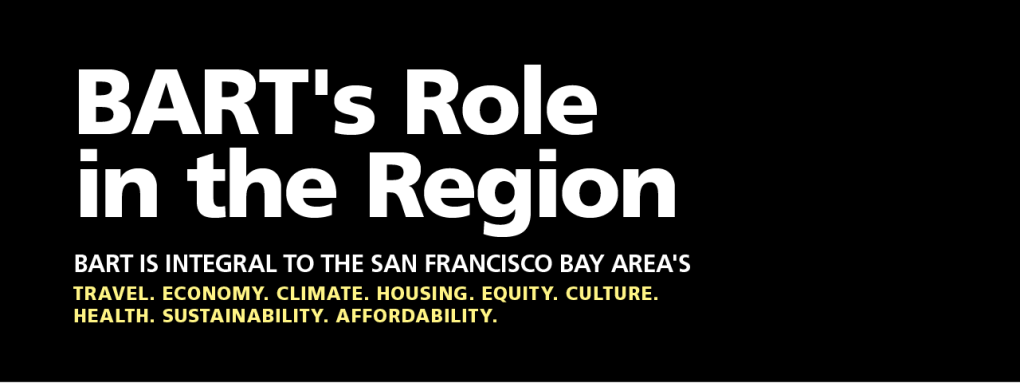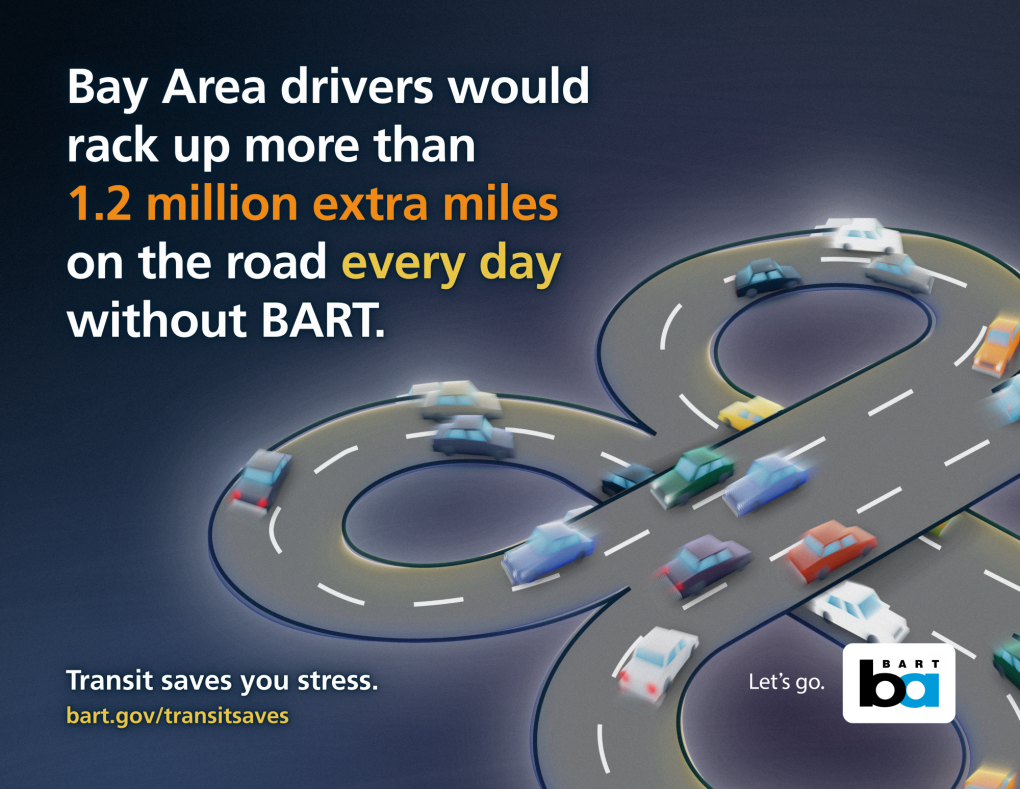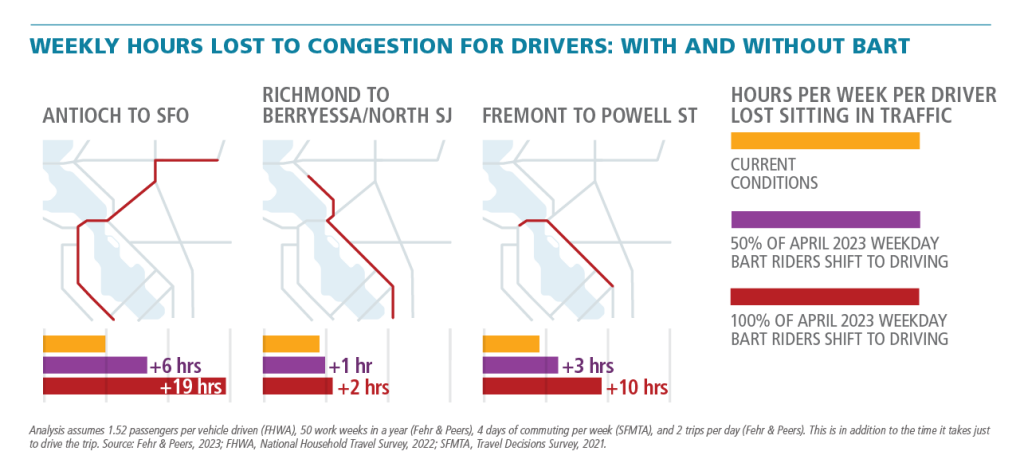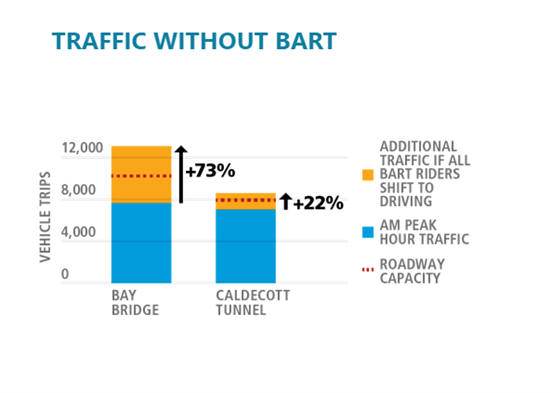Search Results
A cleaner, more comfortable ride: Taking a look at BART's seat replacement project
Photo of BART seat, mid-replacement By Xuan Lam BART Website Intern On an empty railcar, with the intense focus of a surgeon taking out an appendix, a BART worker pokes and pries to remove a saggy, dingy seat cushion from its frame. For a few moments the empty frame looks skeletal, coiled springs exposed at
BART to stop selling all discounted magnetic tickets on December 31, 2021
As part of BART’s transition to offer Clipper as the only fare product available for purchase, BART will stop selling all discounted magnetic stripe tickets starting December 31, 2021, while helping riders transition to the discounted Clipper option. While BART stopped selling tickets from station vending
BART adds more Airport/Long Term parking spaces for holiday period
BART has nearly doubled the number of Airport/Long Term parking spaces available during the Christmas travel season. The additional Airport/Long Term spaces will be available from Friday, December 19, 2008 through Sunday, January 4, 2009. BART is urging the public to purchase their parking permits early as
Google.org funds 20K free BART rides for youth field trips
In partnership with the local non-profit, The Youth Transportation Organization (“Yoots”), BART is working to launch a special Free BART Rides for School Field Trips program that will provide local students, teachers, and chaperones the opportunity to take transit to BARTable field trip destinations. Google
Night Board meeting to cover e-cigarette ban, role of art at BART
The BART Board of Directors will meet Thursday, Jan. 22 at 5 pm to consider a range of topics including a newly proposed ordinance to restrict smoking of e-cigarettes / vaping devices as well as a presentation on the role of public art in existing and future BART facilities. The meeting will be held in the
TSA and BART Police conduct joint training exercise Friday, April 18
From 8:30am to 12:30pm on Friday, April 18, BART Police, the Transportation Security Administration (TSA), and Bay Area law enforcement will be working with other local transit agencies to conduct joint security training exercises at the SFO, Embarcadero, West Oakland, and Coliseum BART stations. The purpose
Role in the Region: BART helps keep cars off the road

In July, BART released the Role in the Region Report, a comprehensive study of BART's impact on the Bay Area illustrated by new analyses, data visualizations, and powerful personal narratives. Over the coming weeks, we'll be sharing some of the key insights from the report in a series of Role in the Region articles here on bart.gov. Below is the first of these articles. We encourage you to read the full report - click here - and visit the project webpage at bart.gov/roleintheregion.
Today's post focuses on how BART keeps cars off the road, significantly reducing traffic congestion. See the full report for methodology.

Spending hours delayed by traffic means less time spent with family and friends or for recreation, which degrades quality of life for everyone, regardless of whether they use transit. Time spent in congestion is also less productive time than working and shopping, which results in less economic activity across the region. Heavy congestion may deter people from taking trips. Since there are no viable alternatives aside from BART and driving between Eastern Contra Costa/Alameda counties and Inner East Bay/West Bay areas, increased congestion may lead to less regional mobility.

BART service even benefits residents that choose to drive, in part by significantly reducing their time lost to congestion and thereby improving quality of life for everyone who lives here, whether they use transit or not. As shown in the image above, if BART did not exist, for some trips drivers could experience upwards of 19 hours in congestion weekly, in addition to the time it would take without any traffic.
What BART Riders Say…
“When I worked, it was so nice to have downtime between work and being a busy mom. BART made it so when I got home, I was relaxed instead of stressed by traffic. It really was wonderful. Now it means I’m heading to fun!"

If BART ceased to exist and riders had to drive instead, traffic could increase by 73% on the Bay Bridge and 22% in the Caldecott Tunnel during morning peak commute hours, which would exceed roadway capacity. To support the increased traffic volume, up to three additional lanes would need to be added to the Bay Bridge and an additional lane in the Caldecott Tunnel.
What BART Riders Say…
“[Without BART,] we probably wouldn't go to as many activities where we'd be fighting traffic and trying to find parking.”
BART Connects
As part of the Role in the Region Report, BART solicited stories from riders to learn how our public transportation system impacts their lives. The stories are compiled at bart.gov/bartconnects.
Below, read an excerpt longtime rider Linda Healey and how BART allowed her time to relax between work and raising a child. Find the full story here.

BART Connects: A working mom remembers when her only downtime each day was her BART ride
Linda Healey commuted to San Francisco from Walnut Creek for more than twenty years. When her son was young, those daily BART rides were her only downtime in the day. “BART got me home to my child quickly,” she said. “And it got me home unstressed because I could relax, rather than sit in traffic. That was a gift.” Today, Healey’s son – now in his thirties and living in Oakland – does the same commute his mother did for so many years, though he hops on the train a few stops up the line. He even works for the same company. “I passed the BART baton to him,” Healey said. “Hopefully one day, he’ll get to take it just for fun.”
Read the Story
With more seat labs scheduled, BART begins analyzing feedback on Fleet of Future
Seat lab at SFSU on May 11 The calendar is being set for all of BART's mobile seat labs, where riders are giving feedback on what they'd like to see in the Fleet of the Future. The seat labs are just one of many ways BART is gathering public input on the project to replace its entire fleet of train cars, the
BART unveils new fare gates at West Oakland Station

As part of its Safe and Clean Plan, on December 28, 2023, BART unveiled prototypes of its new fare gates at the West Oakland Station. The system is upgrading its fare gates for the first time in 20 years. BART has committed to opening 700+ new fare gates systemwide by the end of 2025.
Watch the time lapse video.
Mechanical Door Lock to be Installed Soon
These are not the final version of the fare gates that will be installed throughout the rest of the system. The development team will be installing the latest door-braking technology in the coming weeks. This mechanical door lock will be exclusive to BART. No other transit system in the world has it. Once installed, these gates will be harder to push through than any other fare gate in the world.
The prototypes now installed at West Oakland will test the new gates in a station environment with riders. Initial field testing will primarily focus on door material options.
BART will announce the next eight stations to get the new fare gates at the January 11, 2024, board meeting.
“As a transportation system, we take tremendous pride in saying our riders are what runs BART," said BART General Manager Bob Powers. "Among the world’s transit agencies, BART relies the most on rider fares; they are directly responsible for funding our operations. These new, state-of-the-art fare gates will protect against fare evasion, expand access to transit-dependent riders, and reduce system downtime due to maintenance, which helps boost investment in BART’s long-term growth.”
“We welcome the new fare gates starting at West Oakland and its future expansion to other stations," said BART Police Chief Kevin Franklin. "These stronger, higher gates will limit fare evasions through self-enforced fare payments, keep riders safe and engaged to return to BART, and have police officers focused on more serious situations that require emergency services.”
While BART is rolling out new fare gates to boost safety and reduce fare evasion, the agency is also working to increase access to BART by more than doubling the discount for low-income individuals from 20% to 50% beginning January 1, 2024.
BART’s Safe and Clean Plan focuses on attracting riders to return to the system by reimagining the BART experience. BART is making dramatic improvements, from new payment systems to infrastructure renovations. It's all being done to guarantee customers a clean, safer ride and ensure BART is the safest way to travel around the Bay.